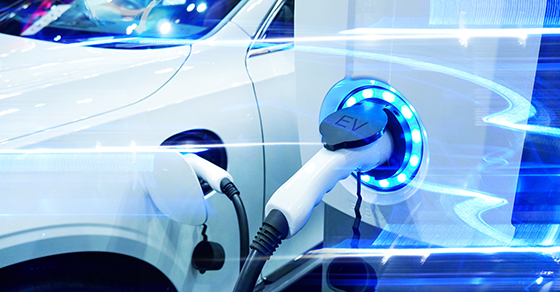The Clean Vehicle Credit comes with caveats – part one

The Inflation Reduction Act (IRA) includes various tax incentives to reduce the severe effects of climate change. The Qualified Plug-in Electric Drive Motor Vehicle Credit Expansion (IRC Section 30D) is one of the elements that is receiving significant attention. You may know it as the Clean Vehicle Credit.
Although the increased credit appears encouraging, concerns have arisen regarding how quickly it will take effect. Below – and in part two of this blog post – is what you should know about the credit if you’re considering buying an electric vehicle (EV).
The Clean Vehicle Credit
Since 2008, there has been a qualified plug-in electric drive motor vehicle credit. The credit begins at $2,500 for light trucks and passenger cars purchased after December 31, 2009. Vehicles having battery capacities of five kW hours or more are eligible for an extra $417, and another $417 for every additional kilowatt hour of capacity. You can only use the credit for up to $7,500.
After a manufacturer has sold at least 200,000 qualified vehicles for usage in the U.S., the credit amount gradually decreases (for sales after December 31, 2009). Due to this restriction, vehicles made by Tesla, General Motors, and other manufacturers are no longer eligible for the credit.
The IRA extends the newly renamed Clean Vehicle Credit until December 31, 2032. Additionally, it alters the credit in several important ways, most of which will gradually take effect. Since the credit is now available for any “clean” vehicle, a plug-in hybrid or a hydrogen fuel cell car might be eligible. It also eliminates the manufacturer production cap after 2022.
The details
The IRA leaves intact the $7,500 max credit amount but bifurcates it. For example, suppose the qualifying vehicle satisfies the requirements of critical minerals and new battery components. In that case, you can receive $3,750 in credits. More information on this topic will be in part two.
The credit now has income restrictions as well. It isn’t accessible to:
- Single filers with modified adjusted gross income (MAGI) over $150,000
- Married couples filing jointly with MAGI over $300,000
- Heads of household with MAGI over $225,000
The cost of the car also places a cap on the credit. A manufacturer’s suggested retail price (MSRP) of more than $80,000 disqualifies vans, pickup trucks, and SUVs. The MSRP of other vehicles must not be more than $55,000.
The so-called “final assembly” requirement went into force right away when President Biden gave the bill his signature. The credit is only available for cars whose final assembly took place in North America. Final assembly refers to the production of an EV at the location from which there is delivery to a seller with all the necessary component parts. The mandate aims to promote home manufacturing.
Calculating the Clean Vehicle Credit
The IRS has created a two-step process to determine whether a vehicle complies with the final assembly requirement. First, look at the list of EVs from 2022 and 2023 on the Department of Energy’s Alternative Fuels Data Center’s website. However, some vehicles on the list may not fit the criterion as some models are put together in several places.
You can enter a specific vehicle’s Vehicle Identification Number (VIN) into the National Highway Traffic Safety Administration’s VIN decoder tool. The tool will verify that the final assembly took place in North America. Then, when you scroll to the bottom of the result page, you’ll get the vehicle’s “Plant Information,” which contains the nation of the plant location.
Taxpayers will still be able to claim a credit on their yearly tax returns as long as they buy eligible EVs. Beginning in 2024, the IRA offers taxpayers a significantly more beneficial alternative. Then, EV buyers can transmit their credit to dealers at the point of sale rather than waiting to claim it on their yearly tax returns. The credit will promptly and directly reduce the purchase price.
More to come
In the upcoming weeks and months, the IRS and Treasury Department have vowed to provide more clarification regarding the many new and ongoing EV-related tax credits. Keep an eye out for part two of this two-part blog series! Contact our RRBB accountants and advisors if you have questions about the Inflation Reduction Act or any other tax matter.
© 2022
RRBB eNEWSLETTER
Get free tax planning and financial advice

